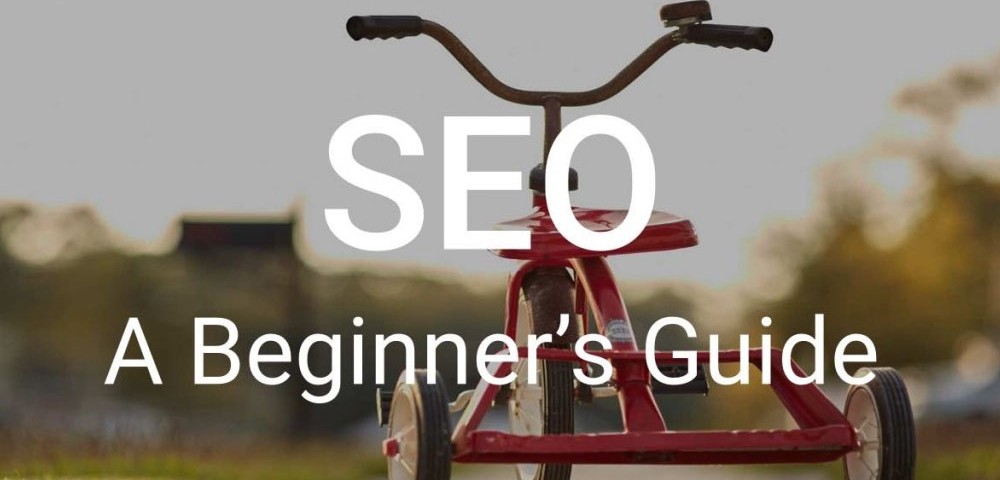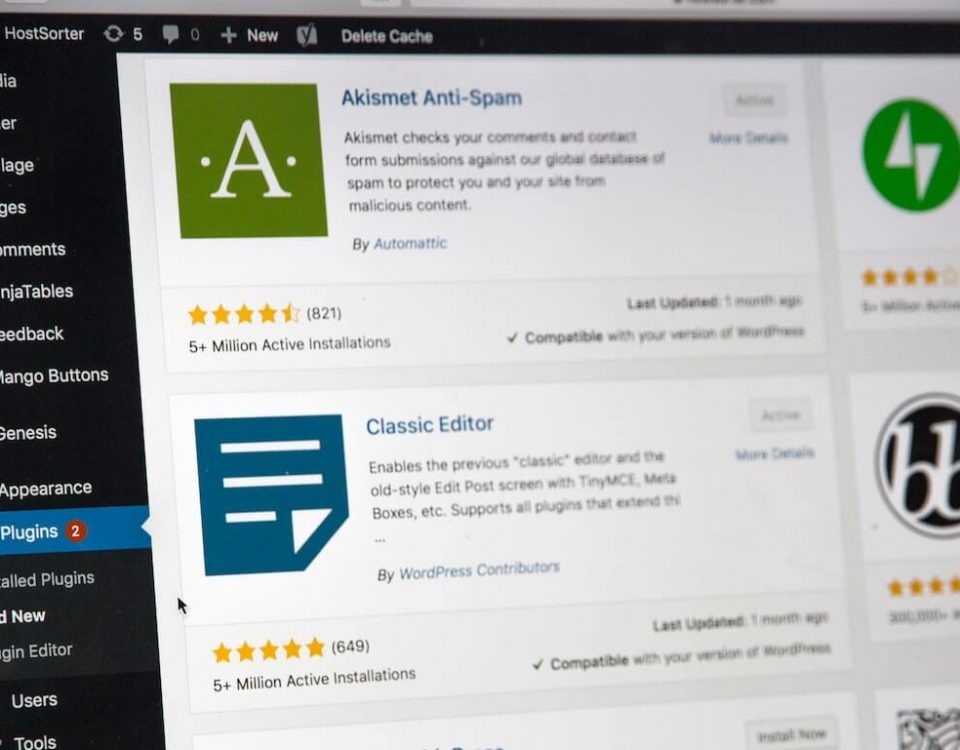SEO: A Beginners Guide

WordPress Security for Beginners – 7 easy steps
July 4, 2016
Website Redesigns – How to Avoid SEO Suicide
July 18, 2016SEO: A Beginners Guide
This SEO Beginners Guide will help you know some of the language and what SEO is all about.
Ready to start attracting your buyers to your website? You keep hearing about search engine optimization (SEO)… but what the heck does that really mean? How do you know if you are spending your money and your efforts on the right things? SEO can be quite confusing. It might even seem a little mystical.
This is a Beginners Guide to SEO. For those of you who are not quite beginners, but not quite comfortable, I recommend you check out these articles. They are written so every business owner or marketing director can understand them.
What is SEO?
Search Engine Optimization is the practice of optimizing your website so that search engines can find it, crawl it and index it properly – meaning, gain an understanding of your content and your solution and the keywords your target market is likely to query to find you.
Each page of your website must be optimized and you will need an ongoing off-site SEO strategy. This article provides a more depth and detail on the “What is SEO?” topic.

What is On-Page SEO?
To get optimum rankings, every page of your website will need to be optimized so that Google and the other search engines can find it, crawl it and index it. Basically, on-page SEO dresses your web pages so that they are ready for the party. Among other procedures, it includes creating effective and compliant meta-data, optimizing the content with the most effective keywords, adding alt-tags to your images and making sure that each page loads quickly. It also involves making sure all of your pages, code and elements comply with Google’s search engine best practices.

What is Off-site SEO?
Off-site SEO includes a huge list of procedures and tactics. It is a very time-intensive process of creating off-site listings, citations, mentions, blogs, high-quality backlinks and more that point back to your site and come up high in the search engines. The more high-quality, best practices techniques you implement off-site, the better chances you have of knocking your competition out of your way. When your off-site SEO is implemented well, your domain and page authority increases. Google likes this.
A high page and domain authority lead to more high-authority backlinks. Backlinks are Google’s favorite dish. The more, the better.

Search Engine Optimization Basics
It is important that you understand your SEO basics. SEO is a little like magic in that there is good SEO and bad SEO. There is actually White Hat SEO and Black Hat SEO.
What is the difference?
Does it matter?
Which works best?

What is White Hat SEO?
The most important thing to understand is that Google has a very strong opinion around White Hat and Black Hat SEO. If you are thinking they prefer White Hat – you are correct! Black Hat tactics will absolutely get your site in trouble… possibly even taken down. Recovery from Black Hat practices can be downright expensive; not to mention the cumulative and exponential costs of lost traffic and new business.

What is Black Hat SEO?
Black Hat SEO oftentimes results in instant results, but it will ultimately cost you more than you ever gain. Black Hat Optimization is used to improve a website’s search engine page ranking results (SERPs) illegitimately and can even include illegal tactics that lower the ranking of a competitor’s site. Among the long dark list of Black Hat tactics are unethical practices like hacking, spamdexing and creating phantom pages.
Black Hat SEO ultimately (and rather quickly) results in significant declines in traffic because visitors’ search engine queries are returning results that don’t match what the searcher is looking for. Black Hat SEO results in:
• higher bounce rates
• declining search engine rankings
• targeted traffic disappearing
• site authority tanking
• huge risk of having your website removed, altogether

What Are Organic Search Results?
There are two types of search engine results. Paid ads are one of the types of search results and they appear at the top or bottom (or in the recent past, on the right side) of the search engine page. The second kind of search engine results are called Organic Search Results.
Organic Search Results are the search engine rankings or results that are returned when a visitor searches for a specific keyword phrase. White Hat SEO practices and tactics create and improve your website’s organic search results. For this reason, SEO is the first and the foundational step in any business’ marketing strategy.
Obviously, you’ll have to have a content strategy in place so that you have content to optimize. The first few months your SEO team may be busy optimizing the core pages of your website. However, you’re going to need to publish new content weekly in order to achieve reasonable search engine rankings. Most searches are conducted on a mobile device and as we become more and more mobile-centered, the likelihood that your buyer will look on the second page of the search engine is very small.
Making sure you are doing everything in your power to achieve first page rankings is very important to your business success. Search Engine Optimization is the most important element of your overall inbound marketing strategy.

How Do I Get Started with SEO?
- Mobile Friendly. The first step in getting started is a mobile-friendly website. If you are unsure about the mobile-friendliness of your website, you can use this free tool and find out in seconds if Google considers your site mobile-friendly compliant.
- Identify the best keyword phrases for your website and for specific landing pages. Be sure to place the keywords at the front of your page title and the URL. Be sure that each page uses the most relevant keywords throughout the content. The best way to do this well is to start with your keywords and build your content around the keywords. Do not stuff your content unnaturally with your keywords.
- On-page SEO. Have an SEO expert provide on-page SEO for all of the pages within your website.
- Content. Develop high-quality, fresh, relevant content for your target audience. Be sure to write your content as though you were speaking directly to a specific customer. We could write a book on content strategy and development. Since this article is about Basic SEO, we’ll keep it short and sweet.
- Linking. Linking to relevant on-site content and using effective Calls-to-Action will draw users into your website. Using videos, photos, illustrations, surveys, infographics, calculators, within your content makes it more readable and provides other websites greater incentive to link to your website. Earning links from other sites is the most powerful way to increase your search engine ranking results. Google interprets these backlinks as an indication of your credibility, topical and industry authority. You’ll also want to include social media share links on all of your pages.
Are you a do-it-yourselfer? Here are 7 steps you can do yourself to optimize your blog for search engines.
SEO is the first step in your inbound marketing strategy. The top search engines have as many as 200 elements in their search engine algorithms. Understanding and achieving excellence in the most influential ranking factors is necessary to achieve high search engine rankings. Your search engine optimization strategy should also include, at a minimum excellent, high-speed, high-security web hosting; strategic, high-value content development; high-authority backlinks and a strong social media strategy.
Want to know how well your search engine optimization is working for you and where there may be actionable opportunities to improve it? We’ll provide a FREE comprehensive SEO audit that will show you exactly what you can do to increase your rankings. We’ll also perform a competitor’s analysis so you can see what your competition is doing well and what you can leverage to out rank and outperform them.
Get your FREE Audit Today. It could unlock the door to new leads and new customers!
Get Your FREE Website and SEO Analysis Today
 Using data-driven analyses and research, we will conduct a thorough performance audit of your:
Using data-driven analyses and research, we will conduct a thorough performance audit of your:
- Website Performance
- Brand Performance
- Inbound Marketing Strategy
- Search Engine Optimization
- Competition
- Social Signals
- Domain Ranking and Rating
Request A Consultation
Ready to ensure your website is capitalizing every opportunity to increase site traffic, leads and conversions?
Questions? Call or email us today!
We’re happy to help you.
It’s painless and its FREE!




